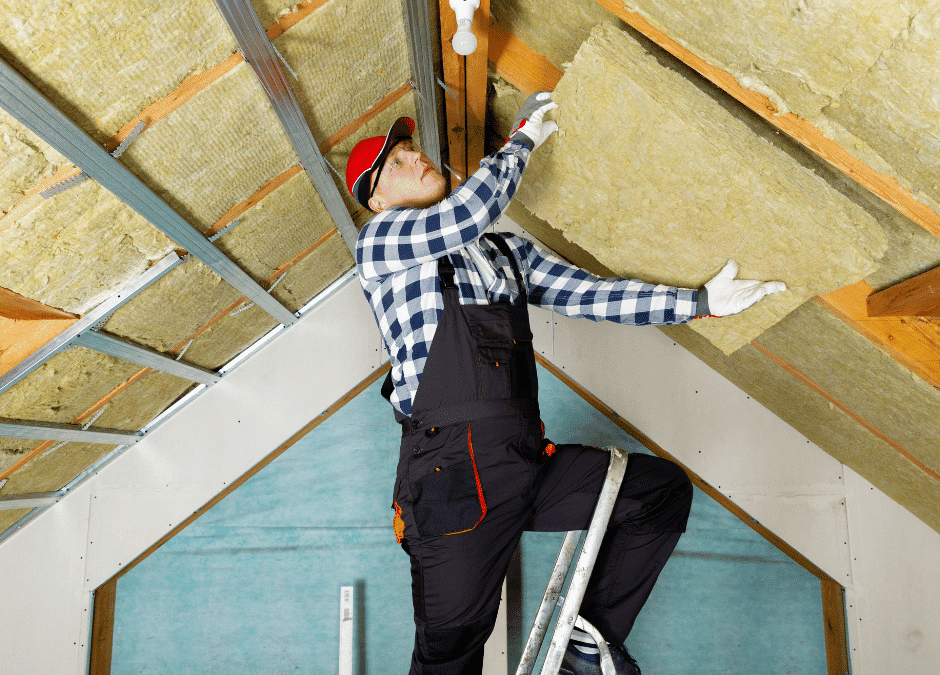Maximizing comfort in your home starts in an unexpected place: your attic. Attic insulation is pivotal in regulating your home’s temperature and energy efficiency. This guide by Rapid Insulation of Atlanta will explore how proper attic insulation can transform your living space into a more comfortable, energy-efficient environment year-round. Efficient attic insulation keeps your home warm in winter and cool in summer and contributes to significant energy savings. Understanding the mechanics and benefits of attic insulation can help you make informed decisions to enhance your living environment.
What is Attic Insulation?
Attic insulation involves creating a barrier of materials in your attic space to prevent heat transfer between your home’s interior and the outside environment. This barrier helps maintain indoor temperatures, making your home cooler in summer and warmer in winter, thus enhancing overall comfort and reducing energy costs. Effective attic insulation serves as a critical method for controlling your home’s climate, ensuring that heat does not escape during the colder months and does not enter during the warmer months.
The Benefits of Proper Attic Insulation
Installing proper attic insulation offers numerous benefits. It significantly reduces energy bills by maintaining consistent indoor temperatures, decreases the workload on your HVAC system, and improves the soundproofing of your home. Moreover, it prevents moisture build-up that can lead to mold and structural damage, making it a critical component of home maintenance. By ensuring your attic is well-insulated, you also enhance the overall value of your home, as energy efficiency becomes increasingly important to prospective buyers.
How Attic Insulation Works
Attic insulation works by resisting the flow of heat. In the winter, it traps heat inside, keeping your home warm, and in the summer, it reflects heat outward to keep your home cool. This resistance to thermal flow is measured in R-values, with higher values indicating better insulation properties. The insulation effectively slows down the heat exchange between your house and the outside, which means your heating and cooling systems do not have to work as hard to maintain a comfortable temperature. Understanding the R-value suitable for your geographic area can help you choose the best insulation type to achieve maximum energy efficiency.
Types of Attic Insulation
Choosing the right attic insulation is crucial for optimizing energy efficiency and comfort in your home. Different materials cater to various needs based on thermal resistance, cost, and installation methods.
- Fiberglass Batts: Commonly used for their affordability and ease of installation, fiberglass batts fit snugly between joists and studs.
- Loose-fill Fiberglass: Ideal for attics with irregular spaces, it’s blown in to fill nooks and crannies, enhancing energy efficiency.
- Cellulose: Made from recycled paper, cellulose is blown in to provide a dense, effective insulation layer.
- Spray Foam: Expands to fill gaps and cracks, offering superior air sealing and insulation properties.
- Rigid Foam Boards: These provide high insulation values and moisture resistance and are suitable for covering large areas.
- Reflective or Radiant Barrier: Installed to reflect heat from the roof, reducing cooling costs in hot climates.
Signs You Need to Upgrade Your Attic Insulation
Common signs that indicate the need for attic insulation upgrades include fluctuating indoor temperatures, high energy bills, and visible insulation deterioration. If your home feels drafty in winter or overly warm in summer, it’s likely time to consider an insulation upgrade. Other indicators may include ice dams forming along the roof during winter—a sign that heat is escaping through the attic. Persistent problems with pests could also suggest gaps in insulation that need addressing. Monitoring these signs can help you maintain an optimal thermal barrier in your home.
How to Choose the Right Insulation for Your Attic
Selecting the right attic insulation involves considering your home’s specific needs, local climate, and the existing insulation’s condition. It’s essential to choose a material with an appropriate R-value for your area. Consulting with insulation professionals can ensure you make the best choice for performance and budget. The proper insulation will fit your home’s requirements and adapt to your environmental conditions, providing long-lasting benefits. Ensuring you choose an insulation that meets all these criteria will result in greater energy efficiency and comfort.
Maintenance Tips for Attic Insulation
Maintaining your attic insulation involves regular inspections for any signs of damage, such as moisture accumulation or pest infestation. Keeping the attic well-ventilated to prevent damp conditions and checking for any displacement or thinning areas of insulation are also vital for sustained insulation efficiency. Periodic checks will help you catch and resolve any issues before they compromise the insulation’s performance. It’s also wise to look out for any new technological advancements in insulation that might offer better efficiency or environmental benefits.
Contact Us for Attic Insulation Services
Attic insulation is a key component in maximizing the comfort and energy efficiency of your home. By partnering with Rapid Insulation of Atlanta, you can ensure your insulation is expertly assessed and installed. Our team is committed to providing you with tailored solutions that meet your specific needs and improve your home’s overall energy performance. Reach out to us to explore how our services can transform your attic into a barrier against energy loss. Trust Rapid Insulation of Atlanta company to elevate your home’s comfort and efficiency.


